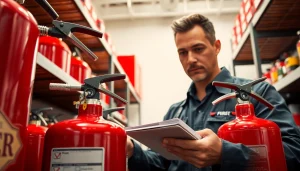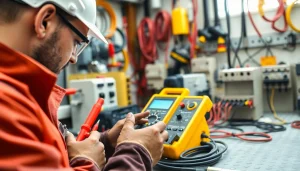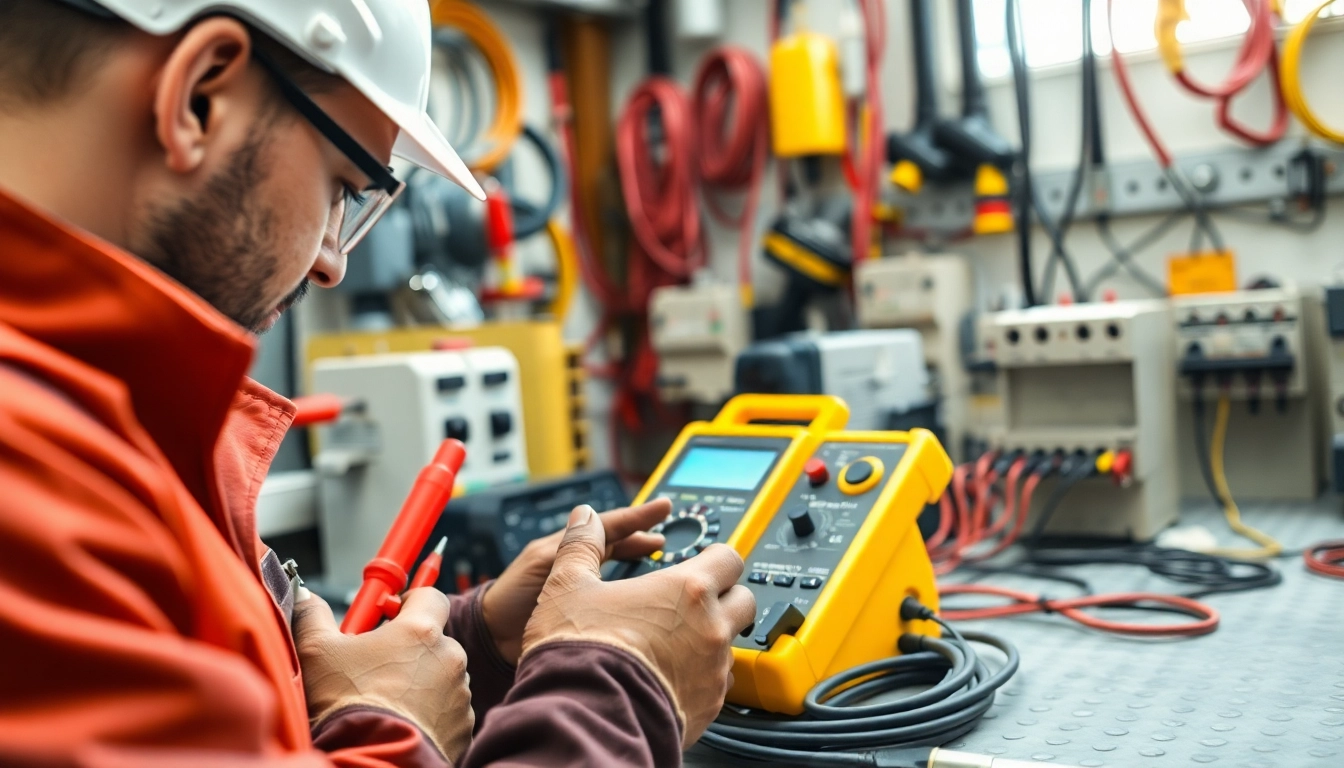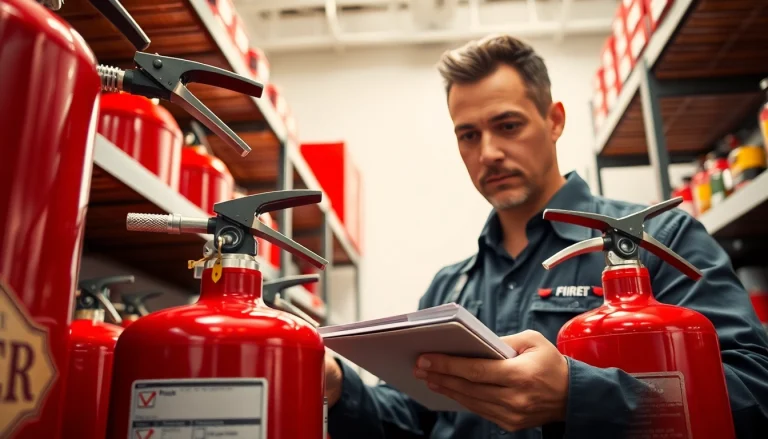Overview of Electrical Equipment Testing
Electrical equipment testing is a critical process that ensures the safety, reliability, and efficiency of electrical systems and components. It encompasses various methods and standards to verify that electrical installations meet required performance specifications, comply with safety regulations, and function effectively in their intended environments. This detailed process is vital not only for maintaining operational efficiency but also for preventing accidents that can arise from faulty electrical connections or equipment failures. By prioritizing Electrical Equipment Testing, businesses and organizations can significantly mitigate risks associated with electrical systems.
Importance of Electrical Equipment Testing
The importance of electrical equipment testing cannot be overstated. It serves multiple purposes, including ensuring safety, compliance with regulations, and enhancing operational performance. Here are some key aspects highlighting its significance:
- Safety Assurance: Testing can identify potential hazards in electrical systems early, minimizing risks of electrical fires, electric shocks, and equipment failures.
- Regulatory Compliance: Many industries are governed by strict safety standards and regulations that mandate regular electrical testing. Compliance is not just a legal obligation but also a commitment to safety.
- Performance Optimization: Regular testing helps maintain the efficiency of electrical systems, reducing energy consumption and operational costs.
- Asset Longevity: Consistent testing in electrical maintenance prolongs the life of equipment by detecting wear and tear, preventing extensive damage that could lead to costly repairs or replacements.
Key Standards and Regulations
Electrical testing is governed by a variety of industry standards and regulations to ensure consistency and safety. Prominent standards include:
- IEC 61010: This international standard outlines safety requirements for electrical testing and measuring equipment.
- NFPA 70E: The National Fire Protection Association’s standard for electrical safety in the workplace focuses on preventing electrical hazards.
- OSHA Regulations: The Occupational Safety and Health Administration provides guidelines for electrical safety and employers’ responsibilities for ensuring safe work environments.
- IEEE Standards: The Institute of Electrical and Electronics Engineers develops standards that help ensure the reliability and safety of electrical systems.
Common Testing Methods Explained
Electrical equipment testing involves various methods, depending on the equipment’s nature and applications. Below are some commonly employed testing methods:
- Visual Inspection: A critical first step involving a thorough examination of equipment for visible signs of damage, overheating, or wear.
- Insulation Resistance Testing: This method measures the quality and resistance of insulation in electrical equipment to prevent leakage currents that could lead to hazards.
- Ground Continuity Testing: Ensures that the grounding system is correctly connected, which is essential for safety against electrical shocks.
- Functional Testing: Verifies that equipment performs as intended under normal operating conditions, encompassing full load testing when appropriate.
Types of Electrical Equipment Tests
Visual Inspection and Testing
Visual inspection is the foundation of electrical testing. It involves checking physical conditions and observing equipment’s overall integrity. Inspectors are trained to look for signs like:
- Cracks in insulation or casings.
- Discoloration or burn marks indicating overheating.
- Loose or damaged connectors and wires.
- Signs of corrosion or moisture ingress.
Conducting regular visual inspections helps identify problems before they escalate, reducing the complication and cost of repairs. It is also essential for identifying equipment that may need to be replaced due to age or condition.
Insulation Resistance Testing
Insulation resistance testing is performed to ensure that electrical components are insulated properly to prevent unwanted current flow. The tests generally involve applying a high voltage (usually between 500V to 1000V) to the insulation while measuring the resistance. Acceptable resistance values usually exceed 1 Megaohm for safety standards. Insulation testing can reveal critical insights into:
- Degradation of insulation materials.
- Moisture ingress affecting insulation efficacy.
- Damage due to mechanical wear or aggressive environmental conditions.
By regularly conducting insulation resistance tests, companies can avoid dangerous breakdowns and ensure long-term reliability of their electrical systems.
Functional Testing of Electrical Systems
Functional testing is a component of a comprehensive electrical testing strategy. It goes beyond simply verifying the insulation and looks at how well the equipment operates under load conditions. Functional tests involve:
- Connecting the equipment to a power source and observing its operation.
- Measuring current draw to ensure it falls within expected parameters.
- Verifying specific operational functionality (e.g., control responses, signal transmissions).
Functional testing is crucial for identifying issues that may not be evident through visual or insulation tests alone, ensuring that when equipment is deployed, it performs safely and effectively.
Benefits of Routine Electrical Equipment Testing
Enhancing Safety and Compliance
Routine electrical equipment testing enhances workplace safety by systematically identifying and mitigating hazards. Compliance with regulations like OSHA and NFPA 70E minimizes legal risks while fostering a culture of safety. With proper testing, organizations can demonstrate their commitment to safeguarding both employees and equipment, reducing the likelihood of accidents that can result in injury or fatality.
Minimizing Downtime and Maintenance Costs
Testing equipment regularly helps pinpoint potential failures before they render equipment inoperative. Unplanned outages can lead to significant operational downtime, loss of revenue, and wasted resources. Proactive testing enables scheduling maintenance during less disruptive times, thereby optimizing operations and reducing overall costs. For example, a manufacturing facility can maintain production lines by identifying possible electrical issues during off-peak hours.
Improving Equipment Lifespan
Regular electrical testing is an investment that pays off by extending the life of equipment. Testing helps identify minor issues before they escalate into significant problems that can lead to extensive repairs or replacements. For instance, timely insulation resistance testing can prevent electrical failures that might otherwise necessitate complete equipment overhauls, ensuring equipment remains in service longer and operates efficiently.
Best Practices in Electrical Equipment Testing
Preparation and Planning for Tests
Effective electrical equipment testing requires thorough planning and preparation. Before conducting tests, organizations should review their testing protocols, ensure that appropriate testing equipment is available, and establish a strategic testing schedule that aligns with operational objectives. Checklists can be instrumental in ensuring that all relevant areas are covered and that no critical tests are overlooked.
Utilizing the Right Tools and Techniques
Using the right tools and methodologies tailored to the specific testing required is crucial for effective electrical testing. This includes employing advanced testing instruments that meet requisite standards, as well as training personnel administering tests to achieve accurate results. High-quality multimeters, insulation testers, and continuity testers deliver more reliable outcomes than basic tools.
Documenting and Analyzing Results
Documentation is a critical element of electrical testing. Recording outcomes not only supports compliance but also enables trend analysis over time. Identifying recurring issues can drive targeted improvements. Maintenance teams can utilize these insights to prioritize equipment needing immediate attention or replacement—a data-driven approach that enhances strategic planning for future electrical infrastructure investments.
Future Trends in Electrical Equipment Testing
Embracing Advanced Testing Technologies
The future of electrical equipment testing lies in the integration of advanced technologies. Innovations such as IoT sensors and analytics software will facilitate real-time monitoring and predictive maintenance strategies. These technologies can provide instant feedback on electrical system performance, flagging potential issues before they lead to failure. As electrical systems grow more complex, utilizing these technologies will be essential for maintaining safety and efficiency.
The Role of Automation in Testing Processes
Automation is revolutionizing electrical equipment testing, enabling organizations to perform tests more efficiently and accurately. Automated testing systems can execute voltage tests, insulation measurements, and continuity checks without human intervention, minimizing potential human error and optimizing test schedules. This shift not only enhances testing consistency but also frees up skilled personnel for more strategic operational roles.
Staying Ahead with Compliance Updates
As safety regulations and industry standards continually evolve, staying informed about changes is critical. Regular training sessions and continuous professional development for electrical testing staff ensure your organization remains compliant and effectively mitigates risks associated with non-compliance. Businesses that adapt quickly to regulatory changes gain a competitive advantage in maintaining safety and operational efficiency.





















+ There are no comments
Add yours